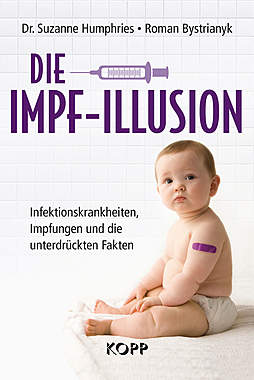- Hedonic Adjustments - CRASH_GURU, 22.04.2005, 13:13
Hedonic Adjustments
-->The following info on CPI is in the current BLS CPI report. http://www.bls.gov/cpi/home.htm#overview
CPI-U, US City Average, All Items: CPI-U, US City Average, All Items Less Food and Energy:
(NSA) +0.8% in Mar 2005 (NSA) +0.6% in Mar 2005
(SA) +0.6% in Mar 2005 (SA) +0.4% in Mar 2005
Ex-seasonal adjusting the CPI is +0.8% and core is +0.6%!
The indexes for rent and owners' equivalent rent increased 0.2 and 0.3 percent, respectively. The BLS has housing costs +3.3% y/y. According to housing industry firms and the US Government (OFHEO) housing prices are up teenage percents. As we have demonstrated in past letters, this understates CPI by about 2.25% because housing is about 1/3 of CPI and rent equivalent (imputed rent) is about 23% of CPI.
The BLS has food prices up 1.5% y/y; and the CRB Index is at its highest level since the early '80s!
BLS has gasoline +7.9% m/m. From our letter of one week ago (4/14/05):"The US Department of Energy reports the average price of all grades of gasoline at the pump increased to $2.12/gal in March from February's $1.95/gal. That's +8.72%. Keep this number handy so you can compare it to what the BLS reports for gasoline prices in its March CPI release next week." Why is this continual discrepancy repeatedly ignored by The Street and fin media?
The CPI index for used cars and trucks rose 0.1% in March to a level 5.0% above March 2004. http://www.bls.gov/news.release/cpi.nr0.htm
"The Manheim Used Vehicle Value Index rose to a level of 112.2, up from 110.3 in February. Wholesale prices over the past year have risen 5.3% and have increased 9.6% from the April 2003 cyclical trough. The monthly gain in wholesale prices for March was 3.5% before the seasonal adjustment and 1.5% after statistically accounting for the normal seasonal improvement that occurs between February and March." http://manheimvalueindex.com/control/indexes/apr2005-4r47h34n/
Mannheim explains how its Used Vehicle Index differs from the 'used vehicle' CPI of the BLS: http://manheimvalueindex.com/contro...r2005-4r47h34n/comparisonCPI.php
Yesterday's missive contains numerous charts that show that CPI and PPI correlated closely until 1991. That's when the US government started to seriously fool with economic data. This is verbatim from the BLS's CPI yesterday:"Effective with the calculation of the seasonal factors for 1990, the Bureau of Labor Statistics has used an enhanced seasonal adjustment procedure called Intervention Analysis Seasonal Adjustment for some CPI series. Intervention Analysis Seasonal Adjustment allows for better estimates of seasonally adjusted data. Extreme values and/or sharp movements which might distort the seasonal pattern are estimated and removed from the data prior to calculation of seasonal factors. Beginning with the calculation of seasonal factors for 1996, X-12-ARIMA software was used for Intervention Analysis Seasonal Adjustment."
"Special Notices:
Each year with the release of the January CPI, seasonal adjustment factors are recalculated to reflect price movements from the just-completed calendar year." http://www.bls.gov/cpi/home.htm#tables
"In fact, homeowners constitute roughly 63% of the CE sample in urban areas. Rent and rental equivalence weights for index aggregation." http://www.bls.gov/cpi/cpifact6.htm But 69.2% of Americans own homes.
Consumer Price Indexes for Rent and Rental Equivalence http://www.bls.gov/cpi/cpifact6.htm
"However, the expenditure weight in the CPI for rental equivalence is obtained by directly asking sampled owner households the following question: If someone were to rent your home today, how much do you think it would rent for monthly, unfurnished and without utilities?"
How would they know?
The CPI Housing Survey.
Housing sample pricing. Because rents are not volatile, the CPI can use a longer interval between pricing observations than it uses for other consumer items. The housing sample is divided into six subsamples called panels. Each panel is priced in consecutive order, so that every panel is priced twice a year." Wow - only two samples per year yet housing is the biggest component of CPI!
Rental equivalence. This approach measures the change in the price of the shelter services provided by owner-occupied housing. Rental equivalence measures the change in the implicit rent, which is the amount a homeowner would pay to rent, or would earn from renting, his or her home in a competitive market. Clearly, the rental value of owned homes is not an easily determined dollar amount, and Housing survey analysts must spend considerable time and effort in estimating this value.
In 1997, BLS started the process of developing a new housing sample to replace the one that had been in use since 1987, and began using it starting with the index for January 1999. BLS dropped the owner sample and returned to the method that was used for the rental equivalence index when it was first introduced, that is, reweighting the renter sample to represent owner-occupied units.
"Effective with the CPI for October 2000, BLS has extended hedonic quality adjustments to washing machines and clothes dryers..." http://www.bls.gov/cpi/cpidryer.htm
The U.S. Consumer Price Index (CPI) for Major Appliances would have increased 0.6 percent instead of the official index increase of 0.8 percent if hedonic quality adjustment methods had been applied to microwave oven (substitution) price changes from August 1999 through April 2000...BLS admits in print that it pared two tenths from CPI for Major Appliances via hedonic adjustments. Now multiply the tenths savings by the plethora of items hedonically adjusted!
Effective with the CPI for July 2000, BLS has extended hedonic quality adjustments to Microwave ovens and Refrigerators, two products in the Major Appliances item stratum." http://www.bls.gov/cpi/cpimwo.htm
College text books are hedonically adjusted - You can't make up stuff like this."The checklist specifications correspond to the characteristics that the hedonics need...The independent variables selected were as follows:
Book cover -- Separate variables were created for hard book covers and soft book covers.
Degree status of intended student and course -- Individual variables were developed for both graduate and undergraduate courses.
Book size -- Six different variables needed to be set up for different sizes of books. The book sizes recognized (in inches) were 8.5 X 11, 8.5 X 9.5, 8.5 X 5.5, 7 X 10, 6 X 9, and Other.
Book pages -- Seven different variables were created for different book lengths. The page categories listed were (a) under 150, (b) 151 - 300, (c) 301 - 500, (d) 501 - 800, (e) 801 - 1150, (f) 1151 - 1500, and (g) over 1500.
Course subjects -- Numerous variables were developed for different course subject matters. In some cases, related subject matters had to be combined to form broader categories. This is the list of course variables that were set up:... http://www.bls.gov/cpi/cpictb.htm
A better book cover (Who decides that and how is it determined?) and lengthier text via hedonic adjusting lowers the CPI price of a book, but not the real cost.
"The CPI will begin to use hedonic regression models for VCRs beginning in April 2000." http://www.bls.gov/cpi/cpivcrp.htm
"A hedonic model for DVD players estimating the average effect on price of characteristics has been specified as follows: http://www.bls.gov/cpi/cpidvd.htm
Hedonic adjustments for camcorders: http://www.bls.gov/cpi/cpicamco.htm
Here is the academic tome in which the BLS rationalizes the use of hedonic adjustments:"Using Hedonic Methods for Quality Adjustment in the CPI: The Consumer Audio Products Component" http://www.bls.gov/cpi/cpiaudio.htm
Other items hedonically adjusted by the BLS for CPI can be found at: http://www.bls.gov/cpi/home.htm#tables
But that's not the entirety of the BLS duplicity. There's also the seasonal adjustments, substitution, chain weighting and as the BLS admits, the systemic ignoring of spikes in prices.
As we wrote a few months ago, when some starts spewing jabberwocky about the increased productivity of more powerful PCs and the righteousness of the BLS in adjusting the actual price of PCs lower because they are more powerful, the simple but prescient retort is: PC productivity is determined by one's typing skills, not the power of the PC (at this juncture in the computing power cycle). As far as we know, we are the first to state this obvious fact. We're just upset that we didn't realize this years ago.
It's absurd and futile to attempt to quantify the subject feelings of hundreds of millions of consumers on various items. It's arrogant, deceitful and it's a non-economic issue. Yet many rationalize the practice, because it suits their self-interest.
And remember, CPI determines 'real' GDP and other 'real' economic data. The use of 'real' in economic data is an Orwellian charade worthy of"1984".
gesamter Thread:
 Mix-Ansicht
Mix-Ansicht

